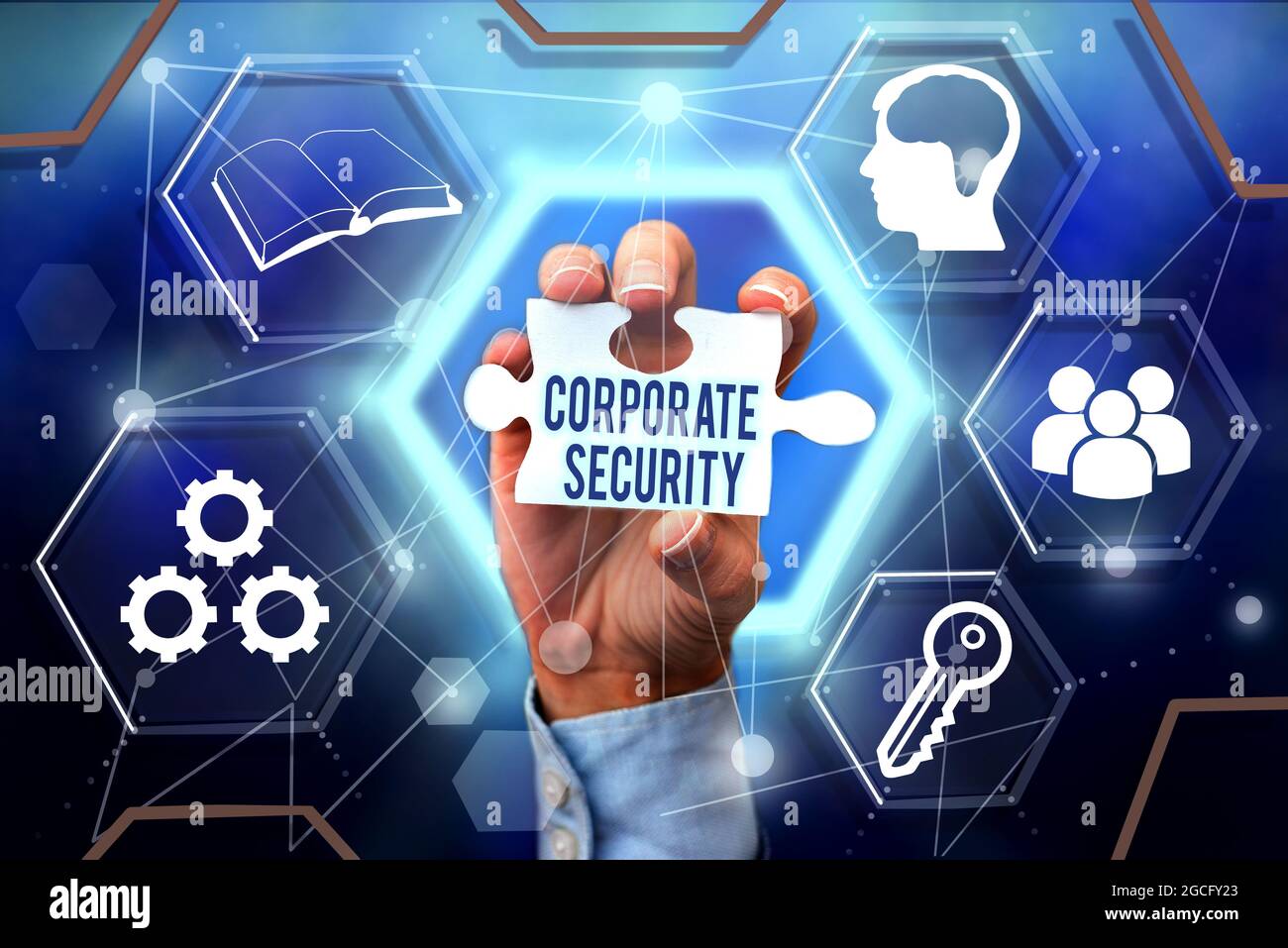Protecting Success: A Deep Dive into Corporate Security Techniques
Protecting Success: A Deep Dive into Corporate Security Techniques
Blog Article
From Cybersecurity to Physical Actions: Reinforcing Corporate Security in a Transforming Globe
In today's swiftly evolving electronic landscape, the value of business protection can not be overemphasized. As cyber risks come to be significantly advanced and widespread, companies must surpass typical cybersecurity steps to protect their properties and operations - corporate security. This is where the integration of physical safety and security measures ends up being important. By integrating the toughness of both cybersecurity and physical safety, business can create an extensive protection approach that deals with the varied series of threats they deal with. In this conversation, we will explore the altering risk landscape, the requirement to incorporate cybersecurity and physical safety and security, the application of multi-factor verification actions, the importance of employee understanding and training, and the adaptation of safety and security measures for remote workforces. By analyzing these crucial locations, we will certainly obtain beneficial insights right into just how companies can strengthen their company protection in an ever-changing world.
Comprehending the Transforming Hazard Landscape
The developing nature of the modern globe demands a comprehensive understanding of the changing threat landscape for efficient business protection. It is important for organizations to stay informed and adjust their security determines to address these advancing dangers.
One trick aspect of recognizing the changing hazard landscape is recognizing the different types of threats that organizations encounter. Cybercriminals are frequently creating new strategies to exploit susceptabilities in computer systems and networks. These threats can vary from malware and ransomware assaults to phishing scams and social design strategies. In addition, physical threats such as burglary, vandalism, and corporate espionage remain widespread issues for companies.
Monitoring and analyzing the risk landscape is necessary in order to determine potential risks and vulnerabilities. This entails staying updated on the current cybersecurity patterns, assessing hazard knowledge reports, and performing regular risk analyses. By understanding the altering danger landscape, companies can proactively implement proper safety actions to alleviate threats and secure their properties, reputation, and stakeholders.
Integrating Cybersecurity and Physical Safety And Security
Integrating cybersecurity and physical security is crucial for extensive company security in today's electronic and interconnected landscape. As companies increasingly count on modern technology and interconnected systems, the borders in between physical and cyber hazards are coming to be obscured. To effectively guard versus these risks, an all natural technique that integrates both cybersecurity and physical protection steps is necessary.
Cybersecurity focuses on shielding electronic possessions, such as data, networks, and systems, from unauthorized accessibility, interruption, and theft. Physical security, on the various other hand, encompasses measures to safeguard physical assets, individuals, and centers from dangers and vulnerabilities. By integrating these two domains, companies can deal with susceptabilities and hazards from both electronic and physical angles, consequently enhancing their total safety and security posture.
The combination of these two disciplines enables a much more detailed understanding of security dangers and makes it possible for a unified reaction to incidents. As an example, physical accessibility controls can be improved by incorporating them with cybersecurity procedures, such as two-factor verification or biometric identification. In a similar way, cybersecurity actions can be matched by physical safety steps, such as security cameras, alarms, and secure access factors.

Applying Multi-Factor Authentication Procedures
As companies increasingly focus on thorough safety and security actions, one effective technique is the execution of multi-factor authentication procedures. Multi-factor verification (MFA) is a safety and security approach that requires users to supply numerous forms of recognition to access a system or application. This technique adds an extra layer of security by integrating something the customer knows, such as a password, with something they have, like a fingerprint or a safety token.
By implementing MFA, organizations can substantially boost their protection posture - corporate security. Conventional password-based authentication has its restrictions, as passwords can be quickly jeopardized or failed to remember. MFA minimizes these threats by including an additional authentication element, making it a lot more tough for unapproved people to get accessibility to sensitive info
There are a number of types of multi-factor authentication methods available, including biometric verification, SMS-based confirmation codes, and equipment symbols. Organizations require to evaluate their particular requirements and choose one of the most ideal MFA remedy for their requirements.
Nevertheless, the application of MFA ought to be carefully planned and implemented. It is critical to strike an equilibrium between safety and security and usability to prevent customer irritation and resistance. Organizations must likewise consider possible compatibility problems and provide ample training and assistance to guarantee a smooth transition.
Enhancing Staff Member Understanding and Training
To strengthen corporate safety, organizations must prioritize enhancing staff member recognition and training. In today's rapidly evolving danger landscape, workers play an essential duty in securing an organization's delicate information and possessions. Unfortunately, several safety violations happen as a result of human error or absence of awareness. Therefore, organizations require to purchase detailed training programs to enlighten their workers concerning potential dangers and the ideal practices for alleviating them.
Effective worker understanding and training programs must cover a wide variety of topics, including data security, phishing assaults, social engineering, password health, and physical safety and security measures. These programs need to be customized to the particular requirements and duties of various staff member duties within the company. Normal training simulations, sessions, and workshops can aid staff members create the essential abilities and expertise to recognize and react to safety and security risks successfully.
Furthermore, organizations need to motivate a culture of protection understanding and offer recurring updates and suggestions to keep staff members notified about the most up to date dangers and mitigation strategies. This over here can be done with internal interaction channels, such as e-newsletters, intranet portals, and e-mail campaigns. By cultivating a security-conscious workforce, companies can substantially look at this now reduce the chance of safety and security incidents and secure their valuable possessions from unauthorized gain access to or concession.

Adapting Safety And Security Procedures for Remote Labor Force
Adapting corporate safety and security procedures to suit a remote workforce is vital in making sure the defense of delicate information and assets (corporate security). With the enhancing pattern of remote job, organizations have to execute appropriate safety actions to minimize the dangers related to this brand-new method of working
One vital aspect of adapting safety and security procedures for remote work is developing safe interaction channels. Encrypted messaging platforms and virtual personal networks (VPNs) can aid safeguard delicate information and protect against unauthorized gain access to. Furthermore, organizations must apply using solid passwords and multi-factor verification to enhance the protection of remote gain access to.
Another crucial factor to consider is the execution of safe and secure remote try this out access options. This involves providing employees with safe and secure access to corporate sources and information with digital desktop framework (VDI), remote desktop protocols (RDP), or cloud-based services. These technologies make sure that sensitive details stays safeguarded while allowing employees to perform their duties successfully.

Lastly, detailed safety understanding training is crucial for remote staff members. Educating sessions ought to cover ideal techniques for firmly accessing and taking care of delicate information, identifying and reporting phishing attempts, and preserving the overall cybersecurity hygiene.
Conclusion
To conclude, as the risk landscape remains to progress, it is crucial for organizations to enhance their safety gauges both in the cyber and physical domain names. Incorporating cybersecurity and physical safety and security, applying multi-factor verification actions, and boosting worker awareness and training are crucial actions in the direction of attaining durable corporate protection. Furthermore, adapting safety and security steps to fit remote workforces is necessary in today's transforming globe. By carrying out these steps, organizations can mitigate threats and shield their useful possessions from prospective risks.
In this conversation, we will discover the altering threat landscape, the demand to integrate cybersecurity and physical protection, the application of multi-factor verification procedures, the importance of staff member awareness and training, and the adjustment of safety and security actions for remote workforces. Cybersecurity actions can be matched by physical protection steps, such as security video cameras, alarm systems, and protected accessibility points.
As organizations significantly prioritize thorough security procedures, one reliable method is the implementation of multi-factor verification actions.In conclusion, as the danger landscape proceeds to develop, it is vital for organizations to enhance their safety gauges both in the cyber and physical domains. Integrating cybersecurity and physical safety, implementing multi-factor verification actions, and enhancing worker understanding and training are crucial steps towards accomplishing durable company security.
Report this page